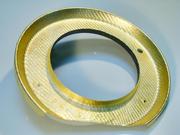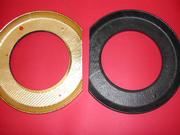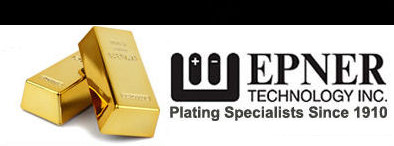This Pyromeral product is called PyroSic; a composite material featuring a glass-ceramic matrix reinforced with silicon carbide fibers. The material has been developed to provide an easy-to-use solution for lightweight parts requiring a very good resistance to heat or fire, up to 1800 ºF. Composite materials, especially carbon-fiber reinforced plastics (CFRP) have been used increasingly in many industries thanks to their ability to deliver excellent mechanical properties while reducing substantially the weight of parts compared to metals. However, the use CFRP has always been limited by their lack of resistance to heat or fire: CFRP generally cannot be used in areas where the temperature exceeds 700°F, therefore making metals (titanium, steel, Inconel) the only viable option for parts exposed to high temperatures. Ceramic-matrix composites (CMC) such as SiC/SiC or C/C have been developed to provide a composite solution for high temperatures, but because of their complex manufacturing process (Chemical Vapor Infiltration or Polymer Infiltration and Pyrolysis) and limitations in terms of design, CMC are typically used only for very special applications (brake discs, propulsion systems for rockets or missiles) and have not yet managed to replace metals for parts exposed to temperatures between 700°F and 1800°F.
With the use of continuous silicon carbide fibers and proprietary thermoset inorganic polymers developed by Pyromeral Systems, PyroSic offers a convenient composite alternative to metals for this temperature range. Properties of PyroSic include:
· Lightweight: PyroSic has a density of 1.84 g/cc compared to 4.50 g/cc for titanium and 8.25 g/cc for Inconel.
· Heat and fire resistance: PyroSic is completely incombustible and retains good mechanical properties up to 1800°F. PyroSic also offers a much lower heat conductivity compared to metals.
· Thermo-structural properties: PyroSic offers good mechanical properties, compatible with applications requiring resistance to stress or vibrations.
· Dimensional stability at high temperatures: PyroSic has a low CTE, and unlike metals or CFRP, it does not warp or distort when exposed to elevated temperatures.
· Convenient processing: PyroSic is processed at low temperatures (< 300°F) with the same techniques and tools as those used for conventional CFRP (including vacuum bagging, autoclave or compression). As a consequence, it can easily be used to manufacture large and complex shape.
PyroSic is used to manufacture heat shields, fire barriers, exhaust systems components, ducts for hot gases and other structural parts exposed to high temperatures in motorsports, automotive, defense and aerospace applications.
ETI was approached to see if the renowned laser gold thermal barrier coating could be applied directly to this ceramic infused carbon fiber material to aid in increasing the heat shield performance of this thermal device. Prior to a full-scale production approach a test proposed whereby a black body radiator simulating the hot brake would be exposed to the Pyromeral material before and after the application of Laser Gold. The test setup involved a heat source and a thermal camera with thermo-couples on the back of the Pyromeral material to measure the heat gain on the backside.
Thermal Response of Pyromeral Composite
By Jack M. Kleinfeld, P.E.

Laser Gold
Laser Gold Heat Shield
Laser Gold coated brake disc heat shield for open-wheel race cars.

Coated VS Uncoated
Coated and Uncoated Brake Disc Heat Shield
Laser Gold coated and uncoated brake disc heat shield for open-wheel race cars.
